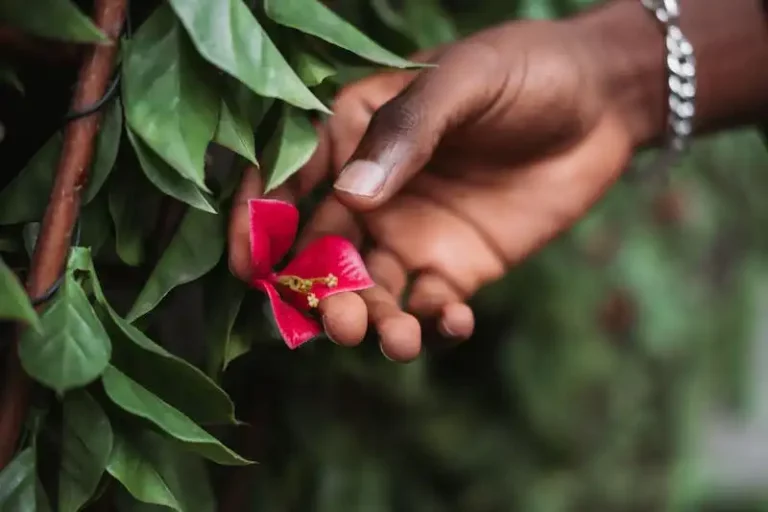When it comes to plants that can thrive in dry environments, xerophytic plants are definitely the ones to look out for. These plants, also known as succulents, have a number of adaptations that allow them to survive in climates with limited water sources. Their leaves, for example, are typically thick and fleshy, with waxy coatings that prevent water loss through evaporation. Some succulents even have spines or hairs on their leaves to further protect against water loss.
One of the most important characteristics of xerophytic plants is their ability to store water in their leaves, stems, or roots. This allows them to survive periods of drought by using the stored water. In fact, some xerophytes can go for weeks or even months without water, making them well-suited for desert environments.
Xerophytic plants are also adapted to very specific growing conditions. For example, they often have shallow, wide-spreading root systems that allow them to quickly absorb any available moisture from the soil. These roots are also capable of absorbing water from multiple sources, such as the morning dew or the occasional rainfall.
With their unique adaptations, xerophytic plants have become a fascinating group of plants to study in the field of biology. Scientists are always exploring the various types of xerophytes and trying to understand how they are able to survive in such harsh environments. By unraveling the secrets of these plants, we can further explain the discrepancies between plant species and their ability to adapt to different climates.
So, if you’ve ever been curious about how plants adapt to survive in arid lands, xerophytic plants are definitely worth learning more about. Their adaptations, characteristics, and survival strategies make them a truly remarkable group of plants.
xerophyte
In the world of plant biology, xerophytes are a diverse group of plants that have adapted to thrive in arid and high-climate areas. These plants are well-suited to survive in desert landscapes and other dry environments, thanks to their unique characteristics and design.
Xerophytes have a variety of adaptations that allow them to survive in the harsh conditions of their habitats. One such adaptation is their thick, wax-coated leaves, which help to reduce water loss through transpiration. Other xerophytes have succulent leaves or stems that store water, such as the iconic cacti and succulents found in desert regions. These plants are capable of surviving for long periods of time without access to water.
Xerophytes also have special root systems that are designed to efficiently absorb and store water. Some xerophytes have deep taproots that can reach water sources deep underground, while others have shallow, widely-spreading roots that collect water from rain or dew. These adaptations allow xerophytes to make the most of every drop of water they receive.
Many xerophytes also have thorns or spines to help protect them from herbivores and reduce water loss through transpiration. These features discourage animals from grazing on the plants and provide shade, helping to further conserve water. Additionally, some xerophytes have hairy or waxy leaves, which serve as insulation against the heat and sunlight.
Examples of xerophytic plants include desert shrubs, cacti, palms, succulents, rosemary, and a wide variety of other plant species found in arid regions around the world. Xerophytes are often used in landscape design for their ability to survive in low-water environments, making them ideal choices for gardens and landscapes in dry climates.
In conclusion, xerophytes are a fascinating group of plants that have evolved to thrive in deserts and other arid regions. Their unique adaptations, such as thick leaves, succulent stems, and specialized root systems, allow them to survive in conditions that would be inhospitable to most other plants. Understanding and appreciating the design and adaptations of xerophytic plants can help us create more sustainable and water-efficient landscapes.
Describe and explain 3 typical adaptations of a xerophytic plant – 6 marks
Xerophytic plants are well-adapted to survive in arid or desert environments, where water availability is limited. They have developed various characteristics and mechanisms to conserve water and withstand extreme conditions. In this section, we will discuss three typical adaptations of xerophytic plants.
| Adaptation | Description | Examples |
|---|---|---|
| Succulent Leaves | Xerophytes often have modified leaves that store water. These leaves are thick and fleshy, enabling them to retain water for extended periods. The thick leaves also reduce surface area, minimizing water loss through evaporation. | Cacti and Aloe Vera |
| Deep Roots | To reach underground water sources, xerophytes have evolved deep roots that can penetrate into the soil. These roots are capable of absorbing water efficiently, enabling the plants to survive in water-deprived regions. | Desert Shrubs |
| Waxy Coating | Xerophytes often possess a waxy coating on their leaves, known as a cuticle. This cuticle helps reduce water loss through transpiration by forming a barrier against evaporation. It also reflects sunlight, preventing overheating. | Palms and Agave |
These adaptations allow xerophytic plants to thrive in xeric environments with low water availability. The discrepancies in their characteristics and adaptations enable them to survive and reproduce in these challenging conditions. Whether it’s the spiny shrubs or toothed leaves, xerophytes have a wide range of unique features that help them thrive in dry land areas.
In conclusion, xerophytes have made every effort to design their plant structures in a way that conserves water and maximizes their chances of survival. Through thick leaves, deep roots, and a waxy coating, these plants are capable of withstanding water scarcity and thriving in arid regions.
Need help with Biology
Are you struggling with Biology? Don’t worry, we’ve got you covered! Whether you’re studying xerophytic plants or any other topic in Biology, we have the resources to help you succeed.
When it comes to xerophytic plants, one key characteristic is their waxy leaves. This wax helps to reduce water loss, making them capable of surviving in arid environments. Rosemary is one example of a xerophytic plant that is well adapted to these harsh conditions.
In addition to their waxy leaves, xerophytic plants also have other adaptations. They may have deep roots to access water sources, or they may use coiled storage organs to store water for future use. Some xerophytes have hair or small leaves to reduce water loss through evaporation. These characteristics make them more able to survive in xeric areas.
If you’re studying xerophytes, it’s important to understand the different types of adaptations they have. Some xerophytes are annual plants, meaning they complete their life cycle in one year. Others, like desert palms, are able to live for many years in the harsh desert conditions.
To learn more about xerophytic plants and their adaptations, you can refer to our free handbook on the topic. It provides detailed information about the different plant types, as well as examples of xerophytes and how they are adapted to survive in arid environments.
If you’re currently studying xerophytic plants and need some help, consider using MyTutor’s biology revision resources. They have a wide range of articles that are specifically adapted to help you understand the concepts better. You can also submit your own questions or plants for measurement and exchange ideas with other students.
So, whether you’re designing a xerophytic garden or just want to learn more about this fascinating group of plants, our resources are here to help you. Don’t hesitate to dive into the world of xerophytic plants and discover the incredible strategies they use to survive in challenging environments!
Download MyTutor’s free revision handbook
In the world of biology, xerophytes are plants that are adapted to live in arid or desert areas where water is scarce. These plants have evolved multiple adaptations to survive and thrive in these harsh environments. Some examples of xerophytic plants include cacti, succulents, and palms.
Xerophytes have unique features that help them conserve water and obtain nutrients in their natural habitats. One of the most noticeable adaptations is the presence of thick, succulent leaves that can store water. These leaves often have toothed or coiled edges to reduce water loss through evaporation. In addition, many xerophytes have modified leaves with spines or thorns to protect themselves from herbivores.
Another adaptation of xerophytic plants is the presence of stomata, which are small pores on the surface of leaves. Stomata allow for gas exchange, but in xerophytes, they are typically found on the underside of leaves to minimize water loss. The stomata open during cooler hours of the day, like early morning or late evening, when water loss is reduced. This helps the plant to conserve water in dry environments.
Xerophytic plants also have deep root systems that can tap into water sources deep underground. Some xerophytes have specialized roots that absorb water from the air in the form of dew or fog. These adaptations allow xerophytes to survive with very little water.
If you are interested in xerophytic plants and want to learn more about their unique features and adaptations, MyTutor’s free revision handbook is the perfect resource for you. It provides detailed information about these plants and their characteristics. You can download the handbook to expand your knowledge and improve your understanding of xerophytic plants.
Whether you are a gardening enthusiast or studying biology, this handbook will provide you with valuable insights into the world of xerophytic plants. It is filled with articles, examples, and illustrations that describe the various types of xerophytes and their adaptations. With this handbook, you can choose the best xerophytic plants for your garden or design a garden suited to the needs of these unique and fascinating plants.
Download MyTutor’s free revision handbook now and delve into the world of xerophytic plants. Expand your knowledge about these amazing plants and discover how they are capable of flourishing in some of the most arid environments on land.
Free weekly group tutorials
At Xerophytic Plants, we offer free weekly group tutorials where you can learn all about these amazing plants. Whether you’re a seasoned gardener or just starting out, our tutorials provide a wealth of knowledge on xerophytes.
Xerophytes are plants that have adapted to survive in dry or harsh conditions. They have unique characteristics that make them well-suited for arid environments. One of the most typical characteristics of xerophytes is their ability to store water in their leaves, stems, or roots. Some xerophytic plants, such as succulents, have thick, fleshy leaves that can store water for long periods of time.
Another common feature of xerophytic plants is their leaf design. Many of these plants have deep grooves or waxy coatings on their leaves, which help reduce water loss through evaporation. Some xerophytes also have tiny spiny hairs or thorns on their leaves, which create a barrier to protect them from excessive heat or water loss. These adaptations allow xerophytes to conserve water and survive in arid landscapes.
In our tutorials, we’ll describe the different types of xerophytic plants, from small succulents to towering desert trees. We’ll also discuss how these plants are able to survive in such harsh environments, including their unique root systems and water storage mechanisms. You’ll learn how to choose and care for xerophytic plants in your own garden, as well as how to create a xerophytic landscape that is well-suited for these plants.
Our tutorials are held every week, and they’re completely free to attend. We encourage you to bring your questions and examples of xerophytic plants from your own garden, as we love discussing real-life scenarios. Whether you’re interested in learning about xerophytic plants for personal enjoyment or professional landscaping purposes, our tutorials can provide you with the knowledge and resources you need.
If you’re passionate about gardening and want to learn more about xerophytes, please join us for our free weekly group tutorials. You’ll have the opportunity to meet fellow plant enthusiasts, share your own experiences, and expand your gardening knowledge. Simply mark your calendar, download our tutorial schedule, and get ready to dive into the fascinating world of xerophytic plants!


